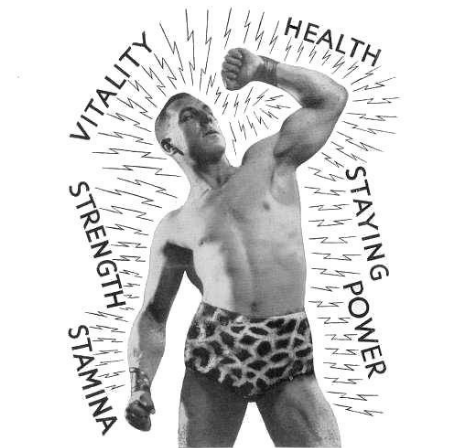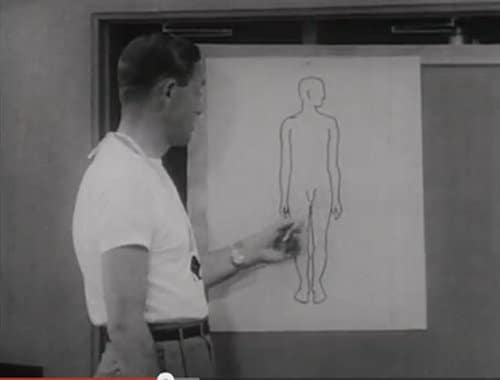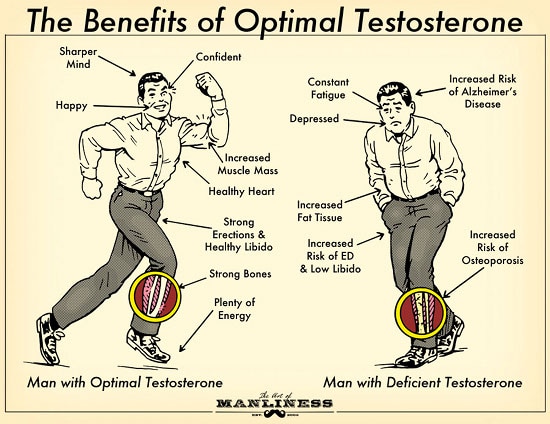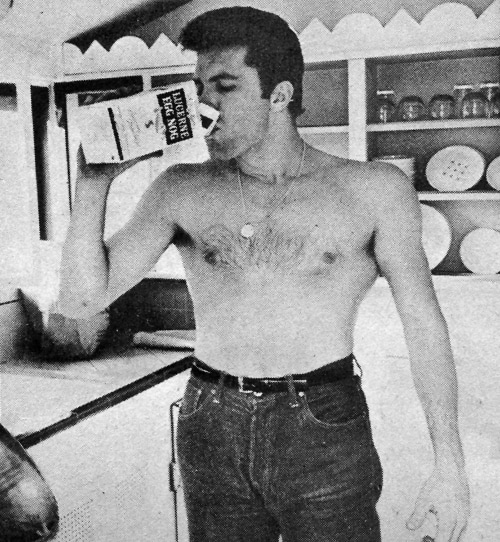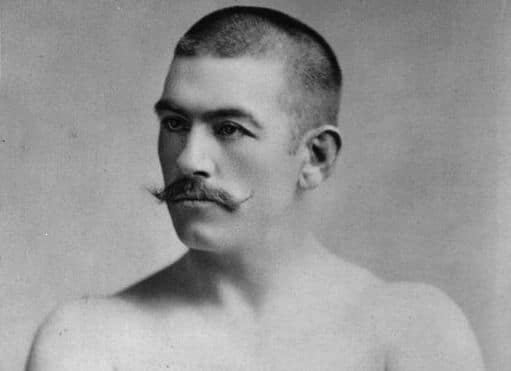In 2013, I published a series of articles about testosterone, which covered the following topics:
- The Declining Virility of Men and the Importance of T
- The Benefits of Optimal Testosterone
- A Short Primer on How T is Made
- What’s a “Normal” Testosterone Level and How to Measure Your T
In the final installment of the series, I shared the results of a 90-day experiment in which I tried to increase my testosterone naturally.
At the beginning of the experiment, I had passed through a month in which, because of heavier than usual work commitments, I had experienced more stress, eaten a poorer diet, and gotten less sleep than I usually do. My lifestyle during that period had been abnormally unhealthy for me, but mirrors the lifestyle many men live month in and month out. My testosterone levels at that time were 383 ng/dL and my free T was 7.2 pg/mL — close to the average for an 85- to 100-year-old man.
By making some simple lifestyle changes over the course of the following three months, I was able to get my testosterone levels up to 778 ng/dL total and my free T up to 14.4 pg/mL. I successfully doubled my testosterone.
After sharing the results of my 90-day experiment, I laid out the lifestyle changes I had adopted which made that doubling possible.
You can read that original report here.
Since that time, seven years have gone by. And I found myself curious as to where my testosterone levels stood currently, given that I’m not only older, but no longer follow the exact lifestyle guidelines I recommended in the original article. While I’ve kept up much of the protocol I set out there, like prioritizing sleep and stress management, I’ve also made some tweaks to my workout routine, and significant alterations to my diet.
Below I’ll lay out what these changes look like, and then show how they’ve affected my testosterone profile.
Lifestyle Changes I’ve Made Since My 2013 Testosterone-Boosting Experiment
Changes in Diet
When I originally published the article on increasing your T, I recommended eating a diet heavy in foods that are high in fat and cholesterol like nuts, eggs, and meat. My recommendations were based on the fact that our glands need certain minerals — like zinc and magnesium — to get testosterone production started and that Leydig cells (located in your testicles) need cholesterol to make T, as well as the fact that studies showed that eating more fat and cholesterol can increase testosterone levels.
For the past seven years, I’ve had the opportunity to speak with PhD’s in health and nutrition sciences on the AoM podcast, which has given me a better understanding of the nuance of scientific studies generally, and the dynamics of testosterone specifically. What I’ve learned about diet and testosterone after talking to these experts is that while some studies have indeed shown that high-fat/high-cholesterol diets can increase T, the difference is often so marginal as to be insignificant, and that if you’re eating a well-balanced diet, you’re likely already getting enough fat, cholesterol, and minerals to produce healthy levels of testosterone. You don’t need to pile your plate with Brazil nuts and bacon. You can certainly follow a high-fat diet if you want to, but it’s not necessary to maintain optimal T levels.
Of greater importance than the exact macronutrient breakdown of your diet is that you 1) keep your weight down, period; adipose tissue (which stores fat) converts testosterone into estrogen, and 2) get enough protein in your diet, period; protein builds muscle mass, and muscle mass, when exercised, produces more T.
I personally found that while a lower-carb/higher-fat diet worked fine for my overall health profile, the lack of carbs made me feel weaker during my workouts. Thus for the last several years, I haven’t been following my high-fat plan as laid out in the original testosterone article. Instead, I’ve been using a flexible, “If It Fits Your Macros” meal plan. I set a goal each day for the amount of protein, carbs, and fat I can consume. As long as I stay within those numbers, I can eat pretty much anything I want.
My macro numbers have fluctuated throughout the past three years based on my different barbell training goals. There will be periods when I’m consuming 4,100 calories a day and periods when I’m eating 2,700 calories a day. It just depends on what my barbell training is looking like during that particular time.
Whatever the amount of calories I’m eating, the ratio of my macro breakdown has remained roughly the same:
- Carbohydrates: 40%
- Protein: 30%
- Fats: 30%
I eat more carbohydrates than is currently popular in some circles. But I’ve found that eating more carbs better fuels my workouts, which allows me to lift more weight, which allows me to get stronger and build more muscle mass, which enhances testosterone.
If you’re curious, here’s what you’ll see me eating most days. I’ve pretty much stuck to this meal line-up for the past three years. Not because it’s special, but because I find it easy to stick with:
Breakfast
- 8 oz egg whites
- 1 whole egg
- 1 oz shredded cheese
- Mission Carb Balance Burrito Tortilla (these have 25 grams of fiber per tortilla!)
I just scramble up the eggs and make a simple breakfast burrito.
Mid-Morning Meal
My mid-morning meal consists of a whey protein shake. To get my fats, I’ll add a tablespoon of olive oil to it. For my carbs, I’ll either add ¼ cup of rice flour to my shake or I’ll pour the shake over a bowl of Cinnamon Toast Crunch or oatmeal. Just depends on what I’m feeling like.
For more insights on how I consume whey protein, see my article on the subject.
Lunch
For lunch I have chicken and sweet potatoes or barbacoa and yams. I’ll throw in some other veggies and fruits too.
Post-Workout Meal
I train at 3PM and I’m done at 4PM. For my post-workout meal, I have a shake that consists of whey protein, with some sort of carbohydrate, and creatine.
Dinner
I just eat whatever my family eats for dinner — enchiladas, spaghetti and meatballs, pancakes and eggs (breakfast for dinner baby!) — in portions that stay within my macro guidelines.
Changes in Supplements
During my initial testosterone-boosting experiment, I took a few supplements that some studies showed could help with testosterone production.
No, none of them were those “natural testosterone boosters” you’ve likely seen advertised in men’s magazines. I knew seven years ago those things didn’t work and are a waste of money, so I never took them.
The supplements I did take were vitamin D3, fish oil, whey protein, and creatine. Research suggests that those first two can increase testosterone a bit, but I’ve dropped them, as I’ve learned that the boost is so marginal that they’re not necessary. Folks should be fine if they eat a balanced diet and go outside to get some sun.
I do continue to take whey protein and creatine, not as a way to directly increase my testosterone, but as a way to build muscle (they’re the only two muscle-building supplements that work), which indirectly increases my T.
I’ve also made a habit of regularly taking a magnesium supplement in the form of Natural Vitality Calm. I didn’t start taking it in order to increase my testosterone, but because I enjoy it as a hot drink at night, and it seems to keep me regular (bowel-wise). Who knows, maybe it helps my T too.
Changes in Workouts
Exercise helps to boost testosterone by increasing muscle mass and decreasing body fat, which as I’ve mentioned, converts testosterone into estrogen; the less fat we store, the more T we have.
Two forms of exercise are particularly helpful for increasing testosterone. The first is lifting heavy weights using compound lifts that work large muscle groups like the squat, deadlift, and shoulder press, and taking adequate rest between sets. The second is HIIT or “High Intensity Interval Training,” which calls for short, intense bursts of effort, followed by periods of less-intense recovery.
I was doing both of these types of exercise during my original testosterone experiment, but in a less structured form than I do them now; I just kind of made up my own workouts at the time. For the past five years, I’ve been following a training program laid out by my Barbell Logic coach, Matt Reynolds. I started off with a novice linear progression that consisted of doing the main barbell lifts for 3 sets of 5. I’ve since moved to more advanced programming that Reynolds tailors just for me. Thanks to my consistent training, I’ve packed on about 40 pounds of muscle over the past several years.
I end all my barbell training sessions with some HIIT. I mix it up to keep it interesting. I’ll do intervals on my assault bike, or sprint outside down my neighborhood street. I also like doing kettlebell swings or calisthenics. As long as I can go hard and fast with it and it gets me out of breath, I’ll do it. My HIIT sessions last 10-15 minutes.
As I recommended in the original article, I continue to avoid overtraining and prioritize recovery. I only do “official” workouts four times a week; on “rest” days, I just take walks around the neighborhood, sit in the sauna, and generally move and stretch my body.
My Testosterone Levels 7 Years Later
So with those changes in my lifestyle, and putting on seven years in age, where do my testosterone levels sit currently?
I took a test this month and the results showed I had 796 ng/dl total testosterone and 18.5 pg/ml free testosterone.
Those levels are on the high end for men my age (I’m 37), and a little higher than they were in 2013, even though I’m seven years older, and even though I’m not following the exact protocol laid out in the original testosterone article.
What this goes to show is that increasing testosterone simply comes down to living a healthy lifestyle, and that can take various forms.
While I don’t do the same kind of workouts I did seven years ago, I still work out. While I don’t eat the same diet I ate seven years ago, I still watch what I eat.
Ultimately then, the specific practices attendant to a healthy lifestyle matter less than the fact that you do them consistently. Keep your body fat down (with whatever diet suits you). Lift heavy weights (with the workout program you personally enjoy). Prioritize sleep and stress management (with the methods that work best for you). And you should be good. You don’t even have to make it an intentional goal to increase your testosterone; just live a healthy lifestyle, and optimal T levels will likely follow (unless you have an underlying problem like hypogonadism). I haven’t thought at all about increasing my testosterone over the last seven years; instead, I just made it a goal to get strong, and my healthy T levels naturally came along for the ride.
Tags: Testosterone

